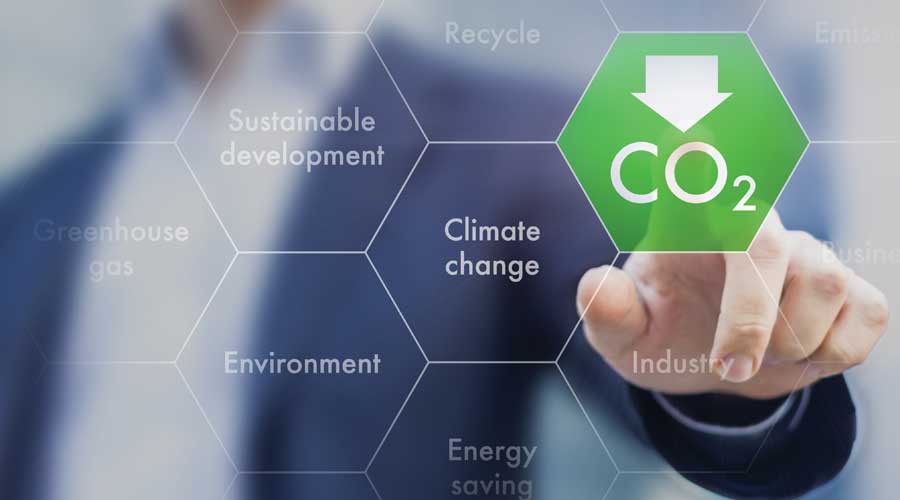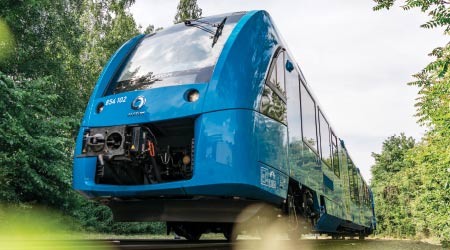Stay updated on news, articles and information for the rail industry
April 2021
Rail News: Sustainability
AAR: Railroads ‘stand ready’ to tackle climate change

By Julie Sneider, Senior Associate Editor
The Association of American Railroads (AAR) in March staked out its positions on climate change, urging federal policy-shapers and lawmakers to embrace market-based solutions that move the nation toward lower or zero carbon choices.
“Well-designed, economically sound policies can effectively drive the economy toward lower overall emissions, specifically in the transportation sector. Railroads stand ready to be part of the solution,” said AAR President and Chief Executive Officer Ian Jefferies in a press release.
Although transportation is the biggest source of greenhouse gas (GHG) emissions, railroads account for just 2.1% of the sector’s emissions, AAR officials say, citing U.S. Environmental Protection Agency data.
In a new policy paper, the association’s leaders call on policymakers to enact emissions reduction strategies that empower competition; restore the federal Highway Trust Fund to a user-pays system with a short-term gas-tax increase followed by transition to a vehicle-miles traveled fee; and impose an emissions surcharge based on vehicle fuel efficiency to provide dedicated funding for passenger-rail service.
AAR officials also want the federal government to embrace research partnerships with the private sector; increase funding for ongoing research into alternative fuels and advanced battery storage; support the use of carbon capture utilization and storage through market development and tax incentives; and provide regulatory flexibility to spur the adoption of new technologies.
Already making a difference
The freight-rail industry has been taking actions the past few decades to lower emissions. Rail fuel efficiency in 2019 was up 82% since 1980 and 17% since 2000, according to the AAR. Many AAR members voluntarily report their GHG emissions to the Climate Disclosure Project, an international nonprofit organization that helps companies disclose their impact on the environment. Also, several Class Is have agreed to voluntarily reduce their GHG emissions intensity.
As noted in the AAR’s paper, more efforts are underway to further shrink railroads’ carbon footprint. For example, BNSF Railway Co. and Wabtec Corp. are working with the California Air Resources Board to test a prototype long-haul battery locomotive; Canadian Pacific is developing what would be North America’s first hydrogen-powered locomotive; and Progress Rail and Pacific Harbor Line Inc. are planning a demonstration project involving a new EMD Joule battery electric locomotive at the ports of Los Angeles and Long Beach.
The federal government could further help railroads test and deploy green technologies by streamlining waiver review timelines, encouraging pilot programs and establishing performance-based thresholds, AAR officials believe.
The association released its policy paper weeks after President Joe Biden announced his administration’s “whole-of-government” approach to the climate crisis. Climate change will be a major factor in many administration proposals, such as economic recovery from the pandemic and infrastructure funding programs.
For instance, the U.S. Department of Transportation recently announced it will begin considering climate change and environmental justice impacts when reviewing applications for grant funding through the Infrastructure for Rebuilding America program.


 2025 MOW Spending Report: Passenger-rail programs
2025 MOW Spending Report: Passenger-rail programs
 Gardner steps down as Amtrak CEO
Gardner steps down as Amtrak CEO
 Guest comment: Oliver Wyman’s David Hunt
Guest comment: Oliver Wyman’s David Hunt
 Women of Influence in Rail eBook
Women of Influence in Rail eBook
 railPrime
railPrime





